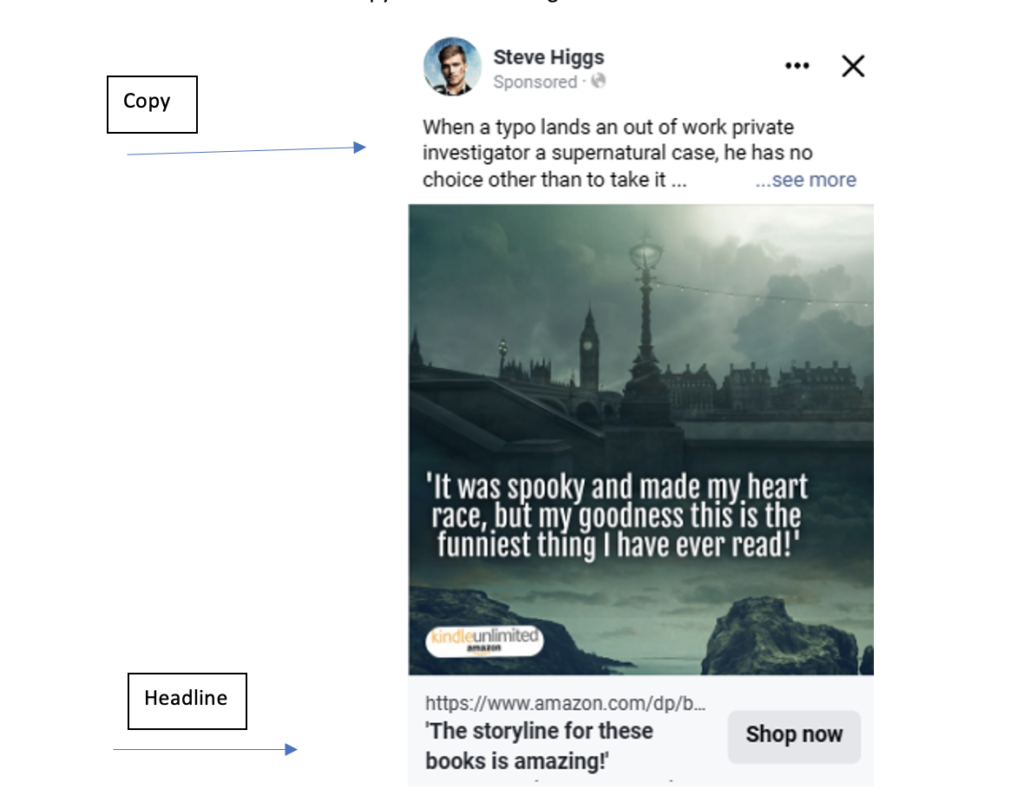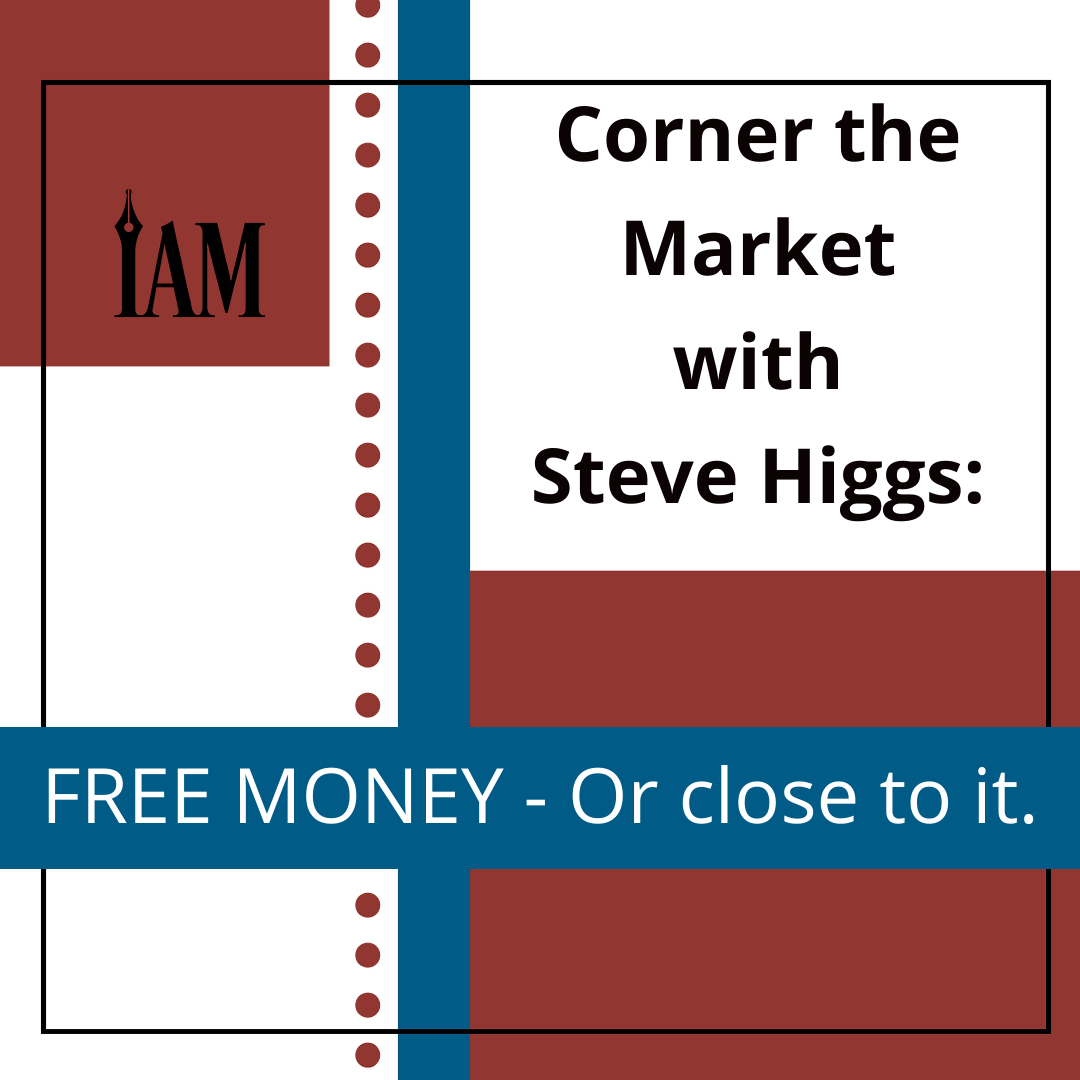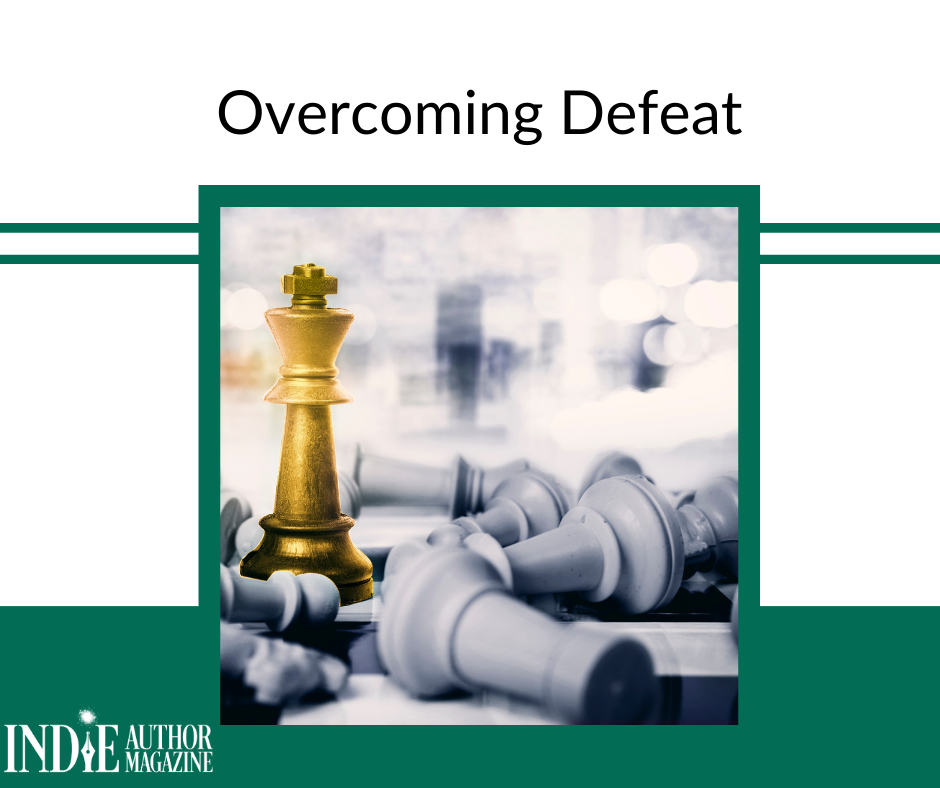As we’ve explored the ins and outs of making Facebook Ads work for you, I’ve explained how to set up ads that will reach the highest number of interested readers and how to choose images that will grab their attention as they scroll. This time, we need to examine the copy and headline. Figure 1 comes from an ad I have run in the past for a Mystery novel.

The copy section is also called the primary text of an ad. In Facebook Ads, you have 120 characters, give or take, to get your point across. You must be choosy with your words—long words will force a new line and steal space you might need. You have even fewer characters for the headline—there’s room for about fifty across the two lines of text you’re allotted. In that limited space, you need to say something that will grab those eyeballs and make your audience want to know more.
As we’ve discussed before, your image will stop people scrolling through their feed. But the copy in your ad will make them click to leave Facebook and go to your product page.
So how do you get the copy and headline right? I typically break it down into three parts:
- I ask a question they need to know the answer to,
- I tell them just a little about the book, and
- I tell them why they are going to want to read it.
If I were to write a tough-guy Thriller and aim my ad at Lee Child fans on Facebook, I might write something like: “Remember when you discovered Jack Reacher? Well, there’s a new guy in town, and he’s bigger, meaner, and someone just got in his way.”
For Janet Evanovich, I might write: “Fans of Stephanie Plum are tearing these books off the shelves! They say it’s like Grandma Mazur got her own series!”
To do this effectively, you need to know the target audience well enough to know what might hook the readers. In these examples, I have given the reader a reason to buy by telling them, “If you like that, you’re gonna love this.”
(You could, of course, say precisely that, but I’ve never found it to work.)
Ending the copy with an ellipsis is a tactic I sometimes employ as well; you can see it in Figure 1. I break off the sentence at a point that leaves my audience hanging and where they must click “See more…” to read the rest of the ad copy. Here are two examples:
- When a typo lands an out-of-work private investigator a supernatural case, he has no choice other than to take it ... He is about to have a really bad week.
- She let a serial killer go. She did it on purpose, but this rising star of the FBI had a reason. The only question is … whether she'll be able to justify it when all the dust has settled.
What else should you put in the “Primary Text” section? Well, you can add almost anything you want, but here is what I add:
- A bit more about the book
- The title (or people will just ask what it is)
- A couple of quotes from reviews
- A final call-to-action advising them to click the “Shop Now” button
- Links to the paperback and/or audiobook
- An invite to join your Facebook group
Like everything else, you should experiment to see what works. Too much detail in your ad and people will not read it. Too little and they will fail to understand what the ad is for and wander off.
Finally, you need a headline. This bold text at the bottom of your ad gives you another chance to catch people’s attention. Remind them that your book is like the books they like. Remind them it is a great Fantasy, Romance, or Mystery. Hit them with a reason to stop scrolling and pay attention. Here are some examples:
“I couldn't sleep until I knew the ending. 10 stars!”
“The cutest cozy mystery book I have ever read!”
“The funniest fantasy books since Terry Pratchett!”
Writing hooky copy is a skill in itself. I got better over time, and you will too. There are also plenty of books out there to help improve this vital skill. Good luck with it!








